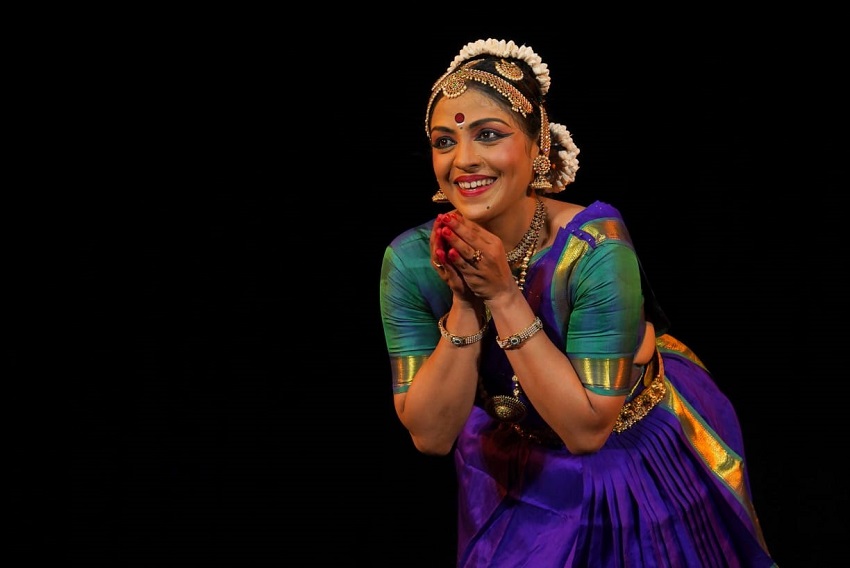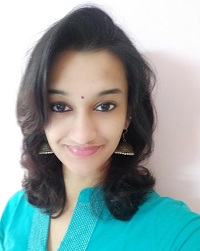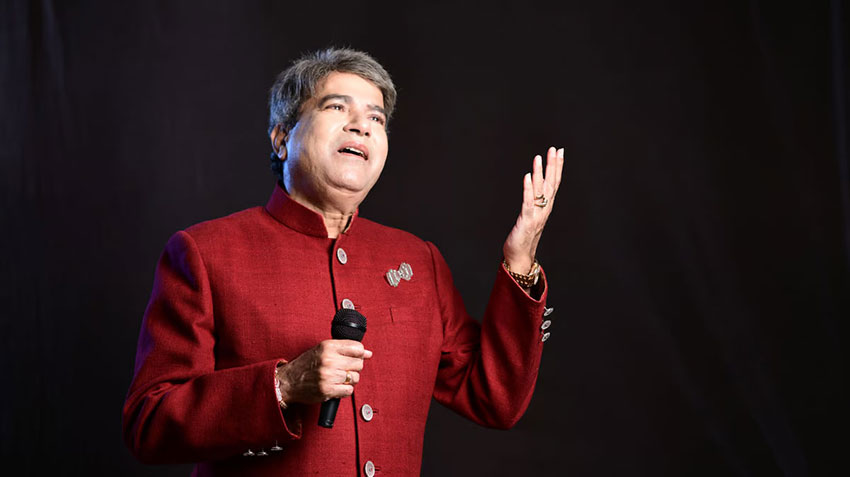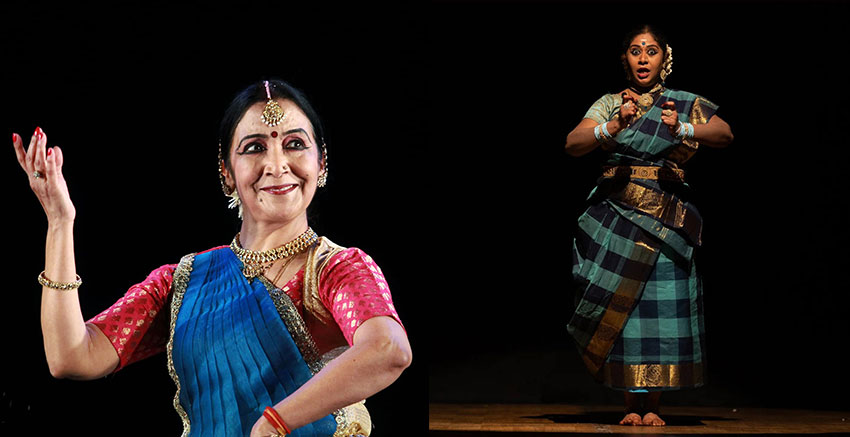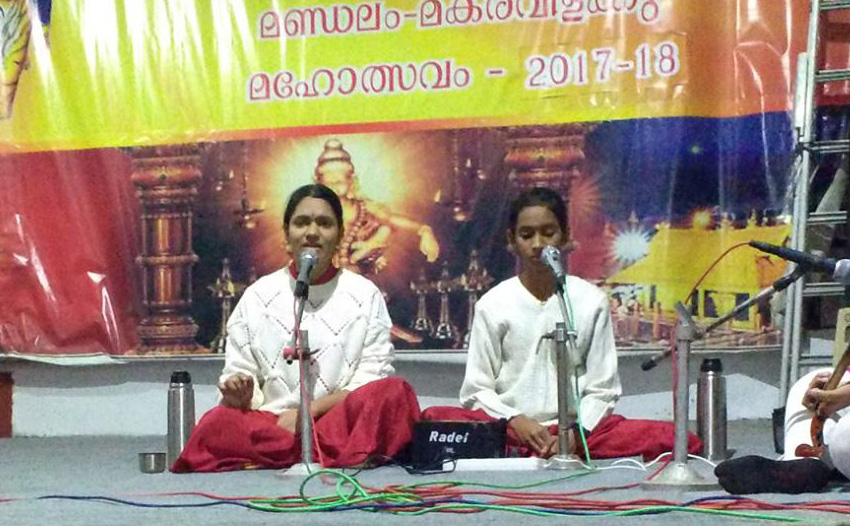Like a well-knit garland, with every bloomed flower, placed with purpose and relation to its neighbor, laid on thread of tenacity and depth, Chaithra Rao’s Margam, was presented with coherence and charm.
Smt. Chaithra, disciple of Acharya smt. Indira Kadambi, took the stage on the 24th of May in Seva Sadan, Bangalore.
She commenced her recital with a Kavithuvam, composed by Sri Gangaimutha Natuvanar in Raagam Hamsadwani and khanda chapu, set to dance by Acharya Smt.Savithri Jagannath Rao. Describing the magnificent dance of the Goddess Kali in the halls of Chidambaram, the piece added a metaphorical spin to begin the dance performance. Aptly interspersed with Nritta, the Sahithya depicted how the goddess honors the prayers of the sage Patanjali and Vyagrapaadha and dances to the accompaniment of Nandi, Narada, Chandradeva and Sooryadeva. Chaithra presented the piece with vigor and valor, while she also succeeded in unveiling shades of poise and elegance.
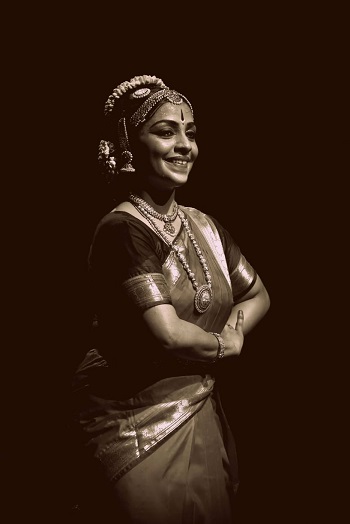
The next piece was a Devaranama, which provided a surprising change to the common Margam sequence, wherein the first half is generally led by the dominance of Nritta. Chaitra gave an extremely convincing performance as a young Krishna, who smartly escapes blame by complaining to his mother about how he can no longer endure the smothering gopikas and their repeated requests to coddle him. Little Krishna complains to his mother that it was the gopikas who forcefully fed him butter, who whisked him away to their house, and gave him kisses. The dancer effortlessly portrayed the complex balance between the innocence of the child and the intelligence of Sri Krishna. “Gokuladali na iralare..”, a composition of saint Purandaradasa was set to Raagam Keerawani and Adi taala, choreographed by Indira Kadambi.
The central piece delivered for the evening was a well-known padavarnam by one of the tanjore quartet, shri shivanandam pillai, Sarasijakshudu in Raagam Kalyani and roopaka thalam, set to dance by Acharya smt Indira Kadambi. Here the love-lorn nayika, driven by passion, drenched in desire, beseeches the lotus eyed Lord Venugopala to unite with her. She tells Sri Venugopala, the great connoisseur of music, who resided in Dakshina Dwaraka, to not reject her, especially at a time when Manmathas arrows were tormenting her. Tired of hearing the beings around her rejoicing, she implores the lord to not make her a toy to his whims, and to embrace her that very second. Though the narrative and sentiment of the piece are not unfamiliar, the presentation was a well-rendered mélange of themes such as shringara, bhakti, atbutha, viraham and sharanagati. Chaithra displayed kinetic excellence through all the theermaanams and charana swarams, while the sthayi bhavam was uncompromised. The jathis composed by Guru Kittappa Pillai was set to dance by Smt. Indira. Given the intensity of the abhinaya, the dancer rightly held on to the motto of “less is more,” while justifiably demonstrating the composition.
In clear contrast, the next piece was a javali, which changed the air around from tender pleas to witty sarcasm. “Aduvum Sholluval” portrayed the conversation between the nayika and her sakhi, caught in their latest gossip about her rivial who had recently seized Lord Muruga’s attention. The nayika speaks of how Lord Muruga has cradled his new lover from rags to riches. She describes how, in the past, the other woman would knock at her door, pleading her for clothes and jewelry. But now the tables have turned, and so the rumors were no surprise to her. The dancer made seamless jumps between the past and the present, between the speaker and that spoken of, between apparent mockery and hidden jealousy. Set to Raagam Saurashtram and Adi Thaalam, this composition of Sri Subbarama Iyer, choreographed by Indira Kadambi, not only consumed the spectator’s attention but also made one respond in laughter and agreement.
Chaitra then moved on to perform a cherished ashta padi by Sri Jayadeva in Raagam Sindhubhairavi and Adi thalam, Yahi Maadhava, potraying an enraged Radha, who, unable to bear the signs of infidelity of her beloved Krishna asks him to leave her and go to the other women who have amused him. The piece was interestingly choreographed and performed to depict not only Radha’s despair, but also to reveal her imagination of what might have transpired between Krishna and the gopis. The depth of the dancer’s aesthetic experience moved one to empathize with the helpless state of the nayika, while also sensing her piercing rage. Smt Chairthra delved into the character’s emotional atmosphere and revealed exceptional levels of expressive potency.
The evening concluded with a Thillana in Raagam Revathi and Thalam thishra chapu, for which the music was composed by Lalgudi Sri Jayaraman, and dance composed by Acharya Smt. Indira Kadambi. It aptly denoted the plight of a bhakta addressing lord muruga, and was accompanied by suitable korvais wherein the anga shudham was keenly maintained. At the pinnacle of a two hour presentation, the dancer delivered the piece with sincerity and grit.
The performance was supported by an accomplished orchestra; Acharya smt Indira kadambi on the nattuvangam, Sri Rajeev R on vocal, Sri G Gurumurthy on mridangam, Sri R Dayakar on violin and Sri Nithish Ammannaya on flute.
Ashwathi PG is a practicing Bharatanatyam artist, teacher, published writer and Clinical Psychologist from Bangalore. She is intrigued by the association between the arts, the psyche and their therapeutic dynamics, and often uses their interplay in her work.



